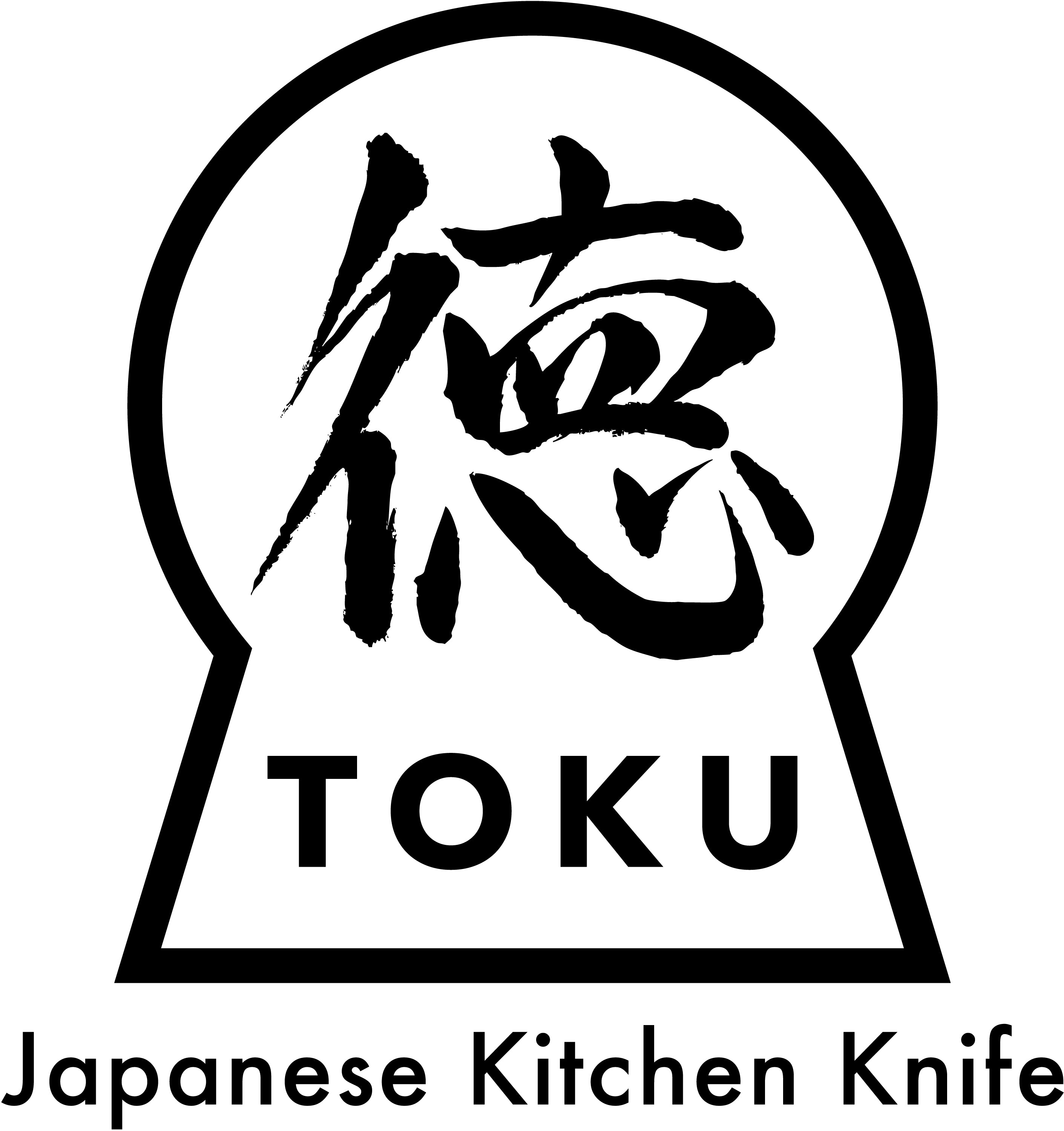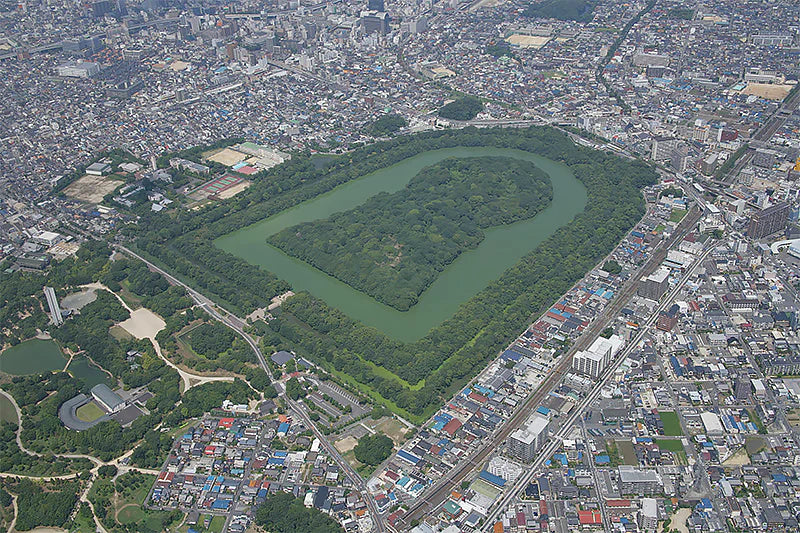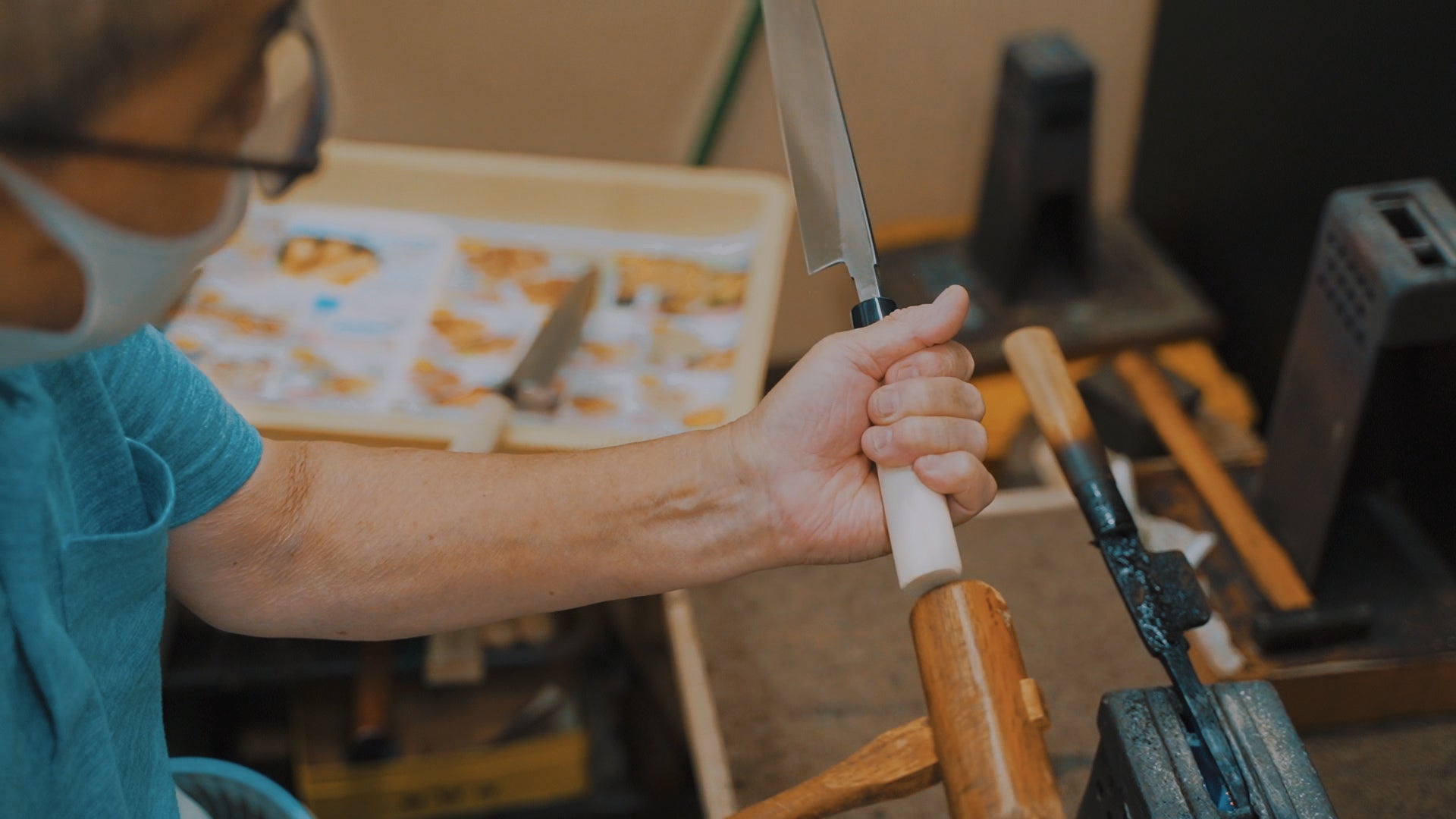
[2024] Knife manufacturing steel edition part 1
I am Okudaira, the owner of "Japanese Kitchen Knife TOKU".
We want to sell knives made in our hometown of Sakai, Osaka, so we purchase and sell knives made in Sakai from a knife manufacturer in Sakai.
We don't just sell knives, we visit a number of blacksmiths and bladesmiths in Sakai to help our customers understand knives, experience the actual work, and hear from the craftsmen. I'm here. In addition to Sakai, we also visit Seki in Gifu, Tsubame-Sanjo in Niigata, and Tanegashima in Kagoshima and Katsushika cutlery in Tokyo, in an effort to deepen our understanding of the characteristics and commitment of each.
Knife manufacturing steel version part 1
Do you know how knives are manufactured?
There are some differences between steel knives and stainless steel knives, but this time we will look at the manufacturing method of steel.
To make a steel knife, a blacksmith, sharpener, and wholesaler each perform their own work to create a knife.
First, the blacksmith hammers hot steel into the shape of the knife.
Next, the sharpener sharpens the knife and attaches the blade.
Once the blade is attached, a wholesaler attaches a handle and put on a signature to create a knife that can be sold.
Roughly speaking, the process is like this, but this time, let's take a closer look at the blacksmith's work.
First, soft iron and steel are heated in a furnace at 1500℃ and then hammered into the shape of a knife.
Once the shape of the knife is formed, use a hammer to create the core, which is the part that points to the handle.
Roughly pound the knife-shaped object with a hammer.
After that, use a grinder to make the back.
Hit it again with the hammer. At this time, we add strength and remove distortion.
In the cutting process, the excess parts are cut off and shaped into a knife.
During the subsequent hardening process, mud is applied to prevent uneven firing.
The knife coated with mud is hardened in a furnace at 800℃.
After quenching, pour it into water all at once to remove heat. This increases the hardness of the blade.
Place the cooled knife back into the 200℃ furnace to temper it. This makes the blade sticky and creates a blade that is less likely to chip.
This is the work of the blacksmith.
I also had the opportunity to actually see and experience blacksmithing at a local blacksmith in Sakai.
The temperature of the furnace reaches 1500 degrees Celsius, so I think it's very difficult to work in the summer.
Also, many manifacture use a belt hammer, which is controlled by the foot, but since the speed of the hammer changes depending on how hard you press the pedal, I found it difficult to adjust the speed.
During the trimming process, I used a manual cutter to cut out the excess parts, but I thought it was quite hard work as it required a lot of force.
When I look at the entire blacksmithing process, I think it's a battle with fire.
However, I thought it was good to know that a knife goes through many processes before it is finished, and because each knife is made through so many steps, it is a good knife that can be used for a lifetime. I understand that it will become.
In addition to Sakai, there are also places where you can actually observe and experience blacksmithing, so if you are interested, why not take a tour or experience it yourself?
If you know that knives that cost a certain amount of money (for example, 10,000 yen or more) take a lot of time and effort to make, you will understand more about the prices of knives, and you will understand how knives are made that way. By using a traditional knife, you will develop a sense of attachment to it.
We have put together a one-minute video about the forging process, so please watch it as well.
https://youtu.be/kUtjYjPDNbo
Let's go to a knife store!
If you don't understand it until you actually see it, go to a knife store and try holding a knife. However, most stores do not allow you to try cutting the knife, so you cannot check the sharpness before purchasing.
If you don't have a store that sells knives near you, it's best to purchase from a knife specialty store's mail order site.
"Sakaitoku Knives" has a video showing the actual cutting process, so please use it as a reference.
Japanese Kitchen Knife - YouTube
https://youtu.be/xdWEEO5omSU
We want to sell knives made in our hometown of Sakai, Osaka, so we purchase and sell knives made in Sakai from a knife manufacturer in Sakai.
We don't just sell knives, we visit a number of blacksmiths and bladesmiths in Sakai to help our customers understand knives, experience the actual work, and hear from the craftsmen. I'm here. In addition to Sakai, we also visit Seki in Gifu, Tsubame-Sanjo in Niigata, and Tanegashima in Kagoshima and Katsushika cutlery in Tokyo, in an effort to deepen our understanding of the characteristics and commitment of each.
Knife manufacturing steel version part 1
Do you know how knives are manufactured?
There are some differences between steel knives and stainless steel knives, but this time we will look at the manufacturing method of steel.
To make a steel knife, a blacksmith, sharpener, and wholesaler each perform their own work to create a knife.
First, the blacksmith hammers hot steel into the shape of the knife.
Next, the sharpener sharpens the knife and attaches the blade.
Once the blade is attached, a wholesaler attaches a handle and put on a signature to create a knife that can be sold.
Roughly speaking, the process is like this, but this time, let's take a closer look at the blacksmith's work.
First, soft iron and steel are heated in a furnace at 1500℃ and then hammered into the shape of a knife.
Once the shape of the knife is formed, use a hammer to create the core, which is the part that points to the handle.
Roughly pound the knife-shaped object with a hammer.
After that, use a grinder to make the back.
Hit it again with the hammer. At this time, we add strength and remove distortion.
In the cutting process, the excess parts are cut off and shaped into a knife.
During the subsequent hardening process, mud is applied to prevent uneven firing.
The knife coated with mud is hardened in a furnace at 800℃.
After quenching, pour it into water all at once to remove heat. This increases the hardness of the blade.
Place the cooled knife back into the 200℃ furnace to temper it. This makes the blade sticky and creates a blade that is less likely to chip.
This is the work of the blacksmith.
I also had the opportunity to actually see and experience blacksmithing at a local blacksmith in Sakai.
The temperature of the furnace reaches 1500 degrees Celsius, so I think it's very difficult to work in the summer.
Also, many manifacture use a belt hammer, which is controlled by the foot, but since the speed of the hammer changes depending on how hard you press the pedal, I found it difficult to adjust the speed.
During the trimming process, I used a manual cutter to cut out the excess parts, but I thought it was quite hard work as it required a lot of force.
When I look at the entire blacksmithing process, I think it's a battle with fire.
However, I thought it was good to know that a knife goes through many processes before it is finished, and because each knife is made through so many steps, it is a good knife that can be used for a lifetime. I understand that it will become.
In addition to Sakai, there are also places where you can actually observe and experience blacksmithing, so if you are interested, why not take a tour or experience it yourself?
If you know that knives that cost a certain amount of money (for example, 10,000 yen or more) take a lot of time and effort to make, you will understand more about the prices of knives, and you will understand how knives are made that way. By using a traditional knife, you will develop a sense of attachment to it.
We have put together a one-minute video about the forging process, so please watch it as well.
https://youtu.be/kUtjYjPDNbo
Let's go to a knife store!
If you don't understand it until you actually see it, go to a knife store and try holding a knife. However, most stores do not allow you to try cutting the knife, so you cannot check the sharpness before purchasing.
If you don't have a store that sells knives near you, it's best to purchase from a knife specialty store's mail order site.
"Sakaitoku Knives" has a video showing the actual cutting process, so please use it as a reference.
Japanese Kitchen Knife - YouTube
https://youtu.be/xdWEEO5omSU



Leave a comment
This site is protected by hCaptcha and the hCaptcha Privacy Policy and Terms of Service apply.